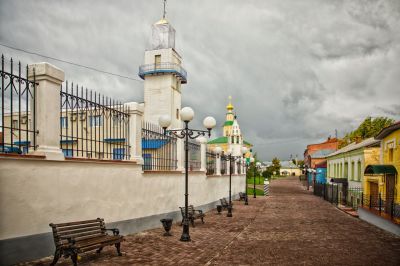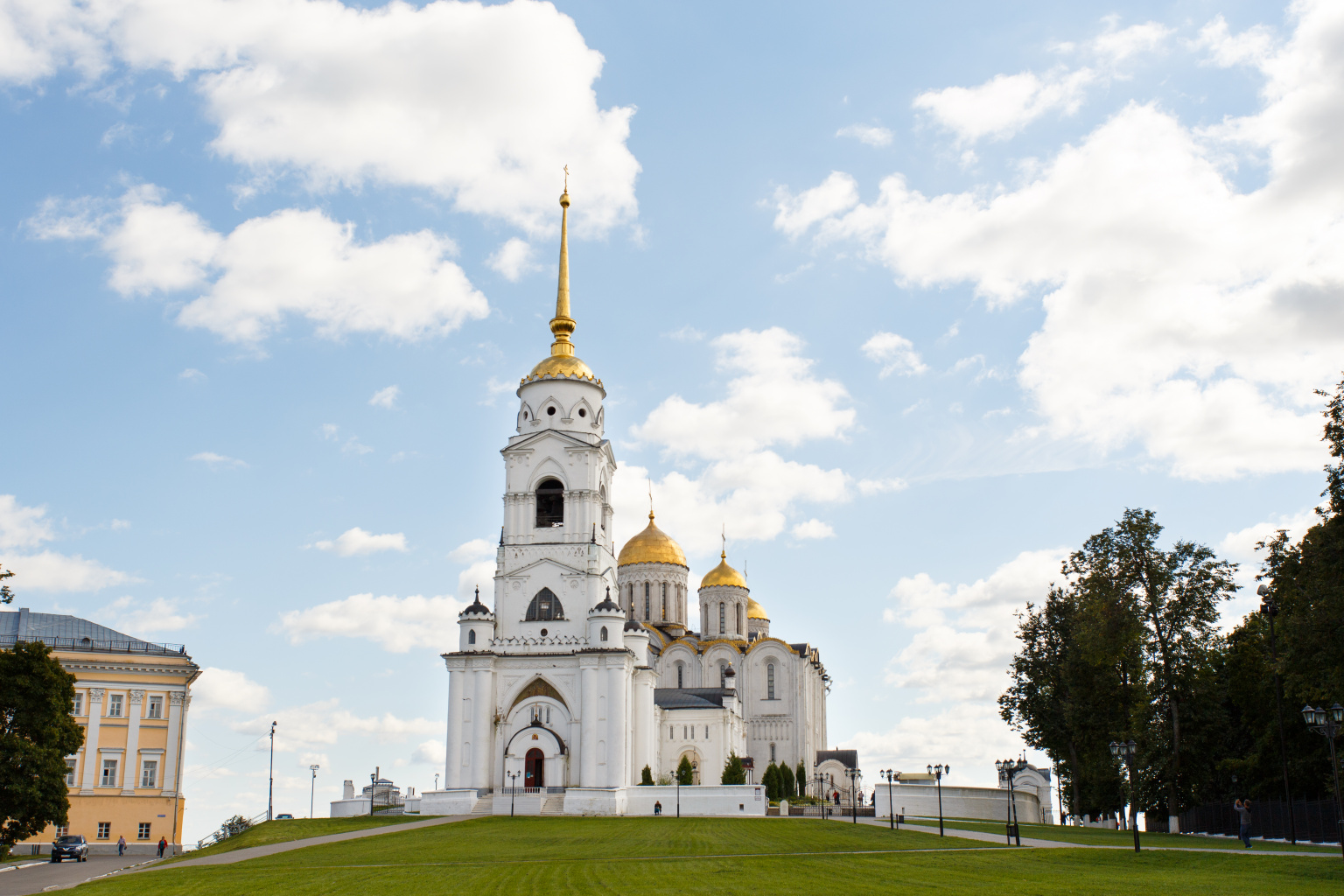The city of Vladimir is close to Moscow (it is just over 170 kilometres from the Moscow Ring Road to the Golden Gate), which makes it one of the most visited tourist attractions in the country. It is clear that if you want to have an idea about the history, you need to go to Vladimir because in the region, there are many other places in addition to the sights of the capital of the Vladimir Region that are no less iconic and attractive for travellers.
The tourists travelling by their own cars should remember that on highway M-7, the road is almost always under repair in one place or another, and such settlements as Kirzhach, Pokrov and Petushki are “famous” for their traffic lights. So, it’s better to have a navigator in the car and quickly plan detour routes if necessary.
Those who come to Vladimir after several hours of travelling should know that any traveller entering the city either by car in our days, or by cart or riding a horse several centuries ago, can enter the city through the gate. In the 12th century, there were seven gates of Vladimir in total and, there was a large rampart between them. The gates were located in various parts of the city, but only the Golden Gate has survived to this day. By the way, they were considered the main gate in those ancient times, and they are the main ones now, because today’s travellers get to the city of Vladimir driving by car along Dvoryanskaya Street. And also, if you delve into historical books, there were Copper, Irina’s, Silver and Volga gates - from those ones that had their own names.
The Golden Gate is not only the most important but also the most beautiful one. And of course, it is connected with a special story. At those days, the gate made of oak was covered with gold-plated copper plates (so, that is why it was called the Golden Gate). They say that before the Tatar-Mongols’ invasion, the plates were removed and thrown into the river. So far, they have not been found yet, or the one who found them did not tell anyone about the find.
There is a museum in the Golden Gate where tourists can get acquainted with the military and historical exposition, the core of which is the diorama showing the dramatic events of February, 1238. It was the time when the city of Vladimir was attacked by the troops of Batu Khan.
And there is a fountain next to this place. In my opinion, this is a very ordinary object but there are few tourists who are able to understand its work schedule. The jets coming from the ground are sometimes accompanied by music, sometimes they are of a minimum height, sometimes they make “changing water patterns” - or do not change their water patterns. The mode can be changed once in an hour, every forty or ten minutes. In general, it’s impossible to figure it out during the first visit, it’s good that a schedule is provided and tourists can take a picture of it. But in the evening, the illuminated fountain is really beautiful, the main thing is to have time to come to the square before 22 p.m.
However, if you could not come to enjoy the amazing fountain, don’t be upset! Just behind the Golden Gate, Bolshaya Moskovskaya (Big Moscow) Street begins, the centre of the modern life of the city, all the main attractions are located along this street. It’s better to make a tour of them in the daytime but when it’s dark, a huge number of cafes and restaurants invite tired and hungry tourists and offer them a wide choice of delicious local and international specialties for various prices for almost any budget.
Let’s get back to sightseeing in the daytime. As for the nature attractions, it is worth visiting the viewing platforms, there are three of them along Bolshaya Moskovskaya Street. Two viewing decks are located very close to the Golden Gate, on Georgievskaya pedestrian street that was the first truly tourist and pedestrian street in Vladimir.

And it appeared quite recently, in 2015, but it was restored in such a way that it creates a real atmosphere of the 18th-19th centuries. Moreover, this street is also interesting for its art objects; for example, tourists can compete here with a firefighter sculpture and pump water from a real street pump. Or they can rub the pharmacist’s nose or his bald head at the monument located next to the Pharmacy Museum. You can see the monument to a cherry tree and get to know that the first cherry trees, according to historical chronicles, were planted in this area 700 years ago, and by the beginning of the 19th century, the number of cherry orchards in the city of Vladimir was almost the largest among the Russia’s regions. Just remember, what varieties of cherry trees were previously planted in the Russian villages? They were the most famous Shubinka and Vladimirka varieties!
The third viewing platform is located in the Pushkin Park and it is the most visited one, although part of it sank this year, so even the monument to Vladimir Krasno Solnyshko (Vladimir the Red Sun) was pulled together with special belts to protect it from destruction. This viewing platform is popular because the most magnificent view of the floodplain of the Klyazma River opens from it, the city’s historical centre is located very close to it with the Assumption Cathedral built in the 12th century, and its frescoes by famous icon painters Andrei Rublyov (the beginning of the 15th century) and Daniil Cherny are still preserved.

By the way, the Assumption Cathedral was built by Prince Andrei Bogolyubsky who also built the Bogolyubovsky Palace and the Church of the Intercession of the Holy Virgin on the Nerl, but this is a topic for another story.
As for the Assumption Cathedral, its construction began in 1158. It is also worth mentioning that the Cathedral had its original appearance only until 1185, when a strong fire broke out in Vladimir and the Cathedral was seriously damaged. But it was not demolished, it was restored.
Later on, a bell tower was built in 1810 in front of the Cathedral, and it was connected to the Church of St. George in 1862, and the onion-shaped domes were replaced with helmet-shaped ones. Well, the massive buttresses were removed as they made the Cathedral look like a real fortress.
By the way, an Easter tree - a huge linden - “bloomed” this year on Easter Sunday in Vladimir for the 5-th time. Every year, Easter eggs are hung on it to decorate the tree, and in 2024, 10 thousand Orthodox symbols of the Resurrection of Christ adorned the Easter tree branches. And in total, scientists say, the trunk and branches of the linden tree can withstand at least half a tonne of Easter eggs.

